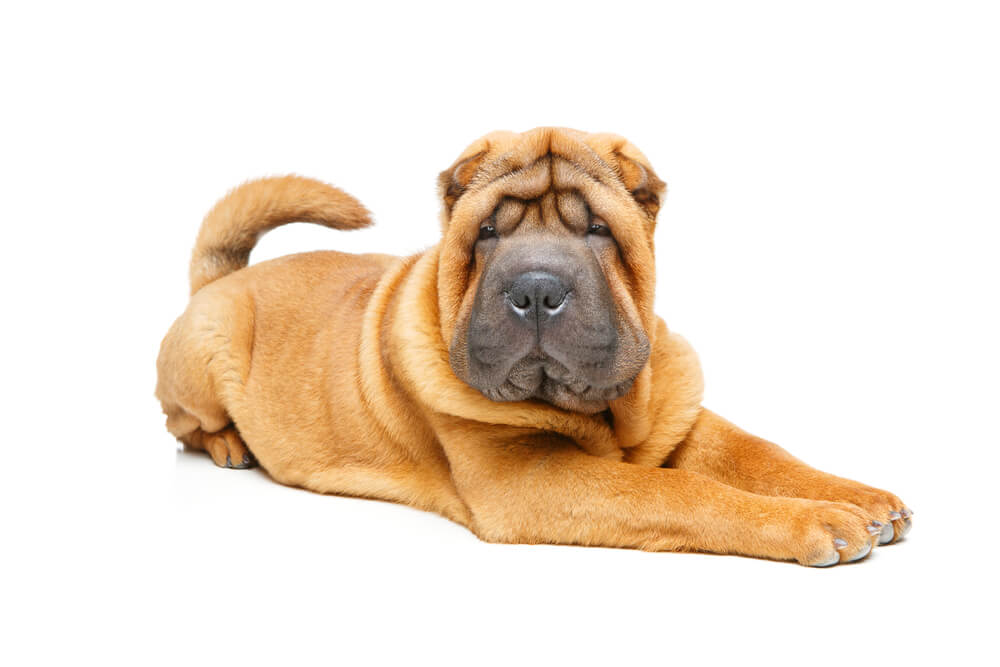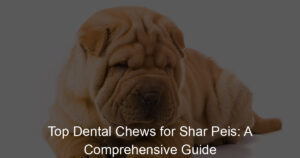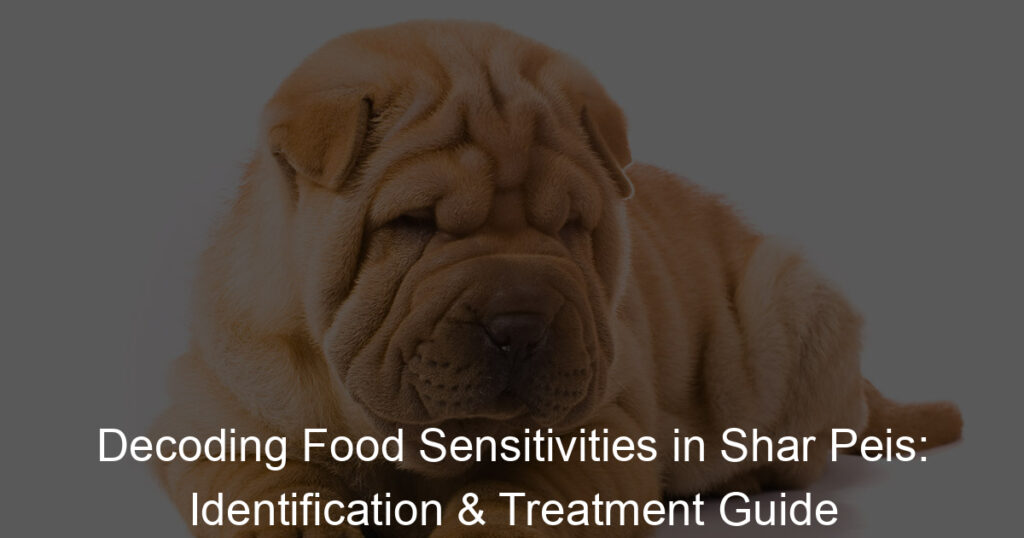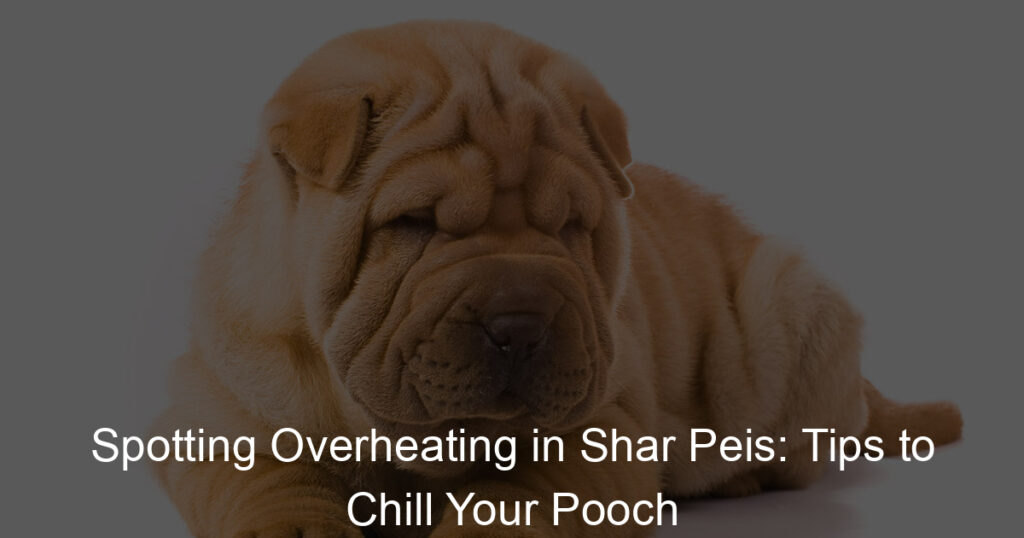Introduction: Understanding Shar Pei Hair Loss
When it comes to our furry friends, their health and happiness are our top priorities. One issue that can affect the well-being of your Shar Pei is hair loss. This can be particularly noticeable in female Shar Peis, who may develop bald spots. In this article, we’ll delve into the causes and solutions for this common problem.
- Overview of the issue: Female Shar Pei bald spots
- Importance of understanding causes of bald spots in Shar Pei
As we continue, we’ll explore the common skin conditions that can lead to hair loss in Shar Peis, the causes of these conditions, and how to treat and prevent them. So, let’s get started on our journey to ensure your Shar Pei has a healthy, shiny coat!
Understanding Shar Pei Skin Conditions
Shar Pei dogs are known for their distinctive wrinkled skin. However, this unique trait can also make them prone to certain skin conditions. Let’s delve into some of the common skin conditions that can affect your Shar Pei, especially those that can lead to hair loss.
Common Shar Pei Skin Conditions
- Shar Pei Alopecia
- Other Skin Conditions Leading to Hair Loss in Female Dogs
Understanding these skin conditions can help you keep an eye out for any signs of trouble. If you notice your Shar Pei scratching excessively, losing hair, or showing signs of discomfort, it’s important to seek veterinary help promptly. Early detection and treatment can help manage these conditions and keep your Shar Pei happy and healthy.
Specific Shar Pei Health Issues
Shar Peis are a unique breed with their own set of health issues. Let’s delve into some of the specific health problems that can lead to bald patches in these adorable dogs.
- Genetic predispositions
- Common health issues leading to bald patches in dogs
Understanding these specific health issues can help you better care for your Shar Pei and prevent hair loss. Regular vet check-ups, a healthy diet, and good grooming practices can go a long way in keeping your Shar Pei’s skin and coat healthy.
Causes of Hair Loss in Shar Pei
One of the common issues that Shar Pei dogs face is hair loss. This can be due to a variety of reasons, but one of the main causes is genetic factors. Let’s delve into the role of genetics in dog breed hair loss and the specific genetic issues in Shar Pei that lead to hair loss.
Genetic Factors
Genetics play a significant role in the health and well-being of all living beings, including our furry friends. When it comes to hair loss in dogs, genetics can be a major contributing factor. Let’s explore this further.
- Role of genetics in dog breed hair loss
- Specific genetic issues in Shar Pei leading to hair loss
Understanding the genetic factors that contribute to hair loss in Shar Pei dogs can help you better care for your pet and manage their health. In the next section, we’ll explore the environmental factors that can also contribute to hair loss in Shar Pei dogs.
Environmental Factors
Just like us humans, our furry friends’ health can also be affected by their environment. This includes the Shar Pei’s coat health. Let’s explore how the environment impacts Shar Pei hair loss and common triggers for bald spots in this breed.
- Impact of Environment on Shar Pei Hair Loss
- Common Environmental Triggers for Bald Spots in Shar Pei
In conclusion, while genetic factors play a significant role in Shar Pei hair loss, environmental factors are equally important. By understanding these factors and taking necessary precautions, you can help your Shar Pei maintain a healthy and shiny coat.
Treating Bald Spots in Shar Pei
Shar Peis are known for their unique, wrinkly skin and short, bristly coat. However, sometimes these adorable dogs can experience hair loss, leading to bald spots. Let’s explore some medical treatments that can help.
Medical Treatments
When it comes to treating hair loss in Shar Peis, there are several medical treatments available. These treatments are designed to address the underlying cause of the hair loss, whether it’s a skin condition, hormonal imbalance, or other health issue.
- Common medical treatments for Shar Pei hair loss
- Case study: Successful medical treatment of Shar Pei alopecia
Remember, every dog is unique and what works for one might not work for another. It’s important to work closely with your vet to find the best treatment for your Shar Pei.
Natural Remedies
When it comes to treating hair loss in Shar Peis, many pet owners are turning to natural remedies. These treatments can be a great alternative to traditional medical treatments, especially for those who prefer a more holistic approach to their pet’s health. Let’s explore some effective natural remedies for hair loss in female dogs and a case study of a Shar Pei who successfully recovered from hair loss using these remedies.
- Effective Natural Remedies for Hair Loss in Female Dogs
- Coconut Oil: Coconut oil is known for its moisturizing properties. Regularly massaging it into your dog’s skin can help to nourish the skin and promote hair growth.
- Fish Oil: Fish oil is rich in omega-3 fatty acids, which can help to improve skin health and reduce inflammation. Adding fish oil to your dog’s diet can help to promote healthy hair growth.
- Aloe Vera: Aloe Vera is a natural remedy that can soothe irritated skin and promote hair growth. Apply aloe vera gel directly to the affected areas for best results.
- Case Study: Successful Use of Natural Remedies for Shar Pei Hair Loss
Remember, every dog is unique, and what works for one might not work for another. Always consult with your vet before starting any new treatment regimen. Natural remedies can be a great option, but they should be used in conjunction with regular veterinary care.
Preventing Hair Loss in Shar Pei
Preventing hair loss in your Shar Pei is all about maintaining a healthy lifestyle and taking good care of their skin and coat. Here are some best practices and key takeaways to help you keep your Shar Pei’s coat looking its best.
- Best practices for preventing Shar Pei hair loss
- Key takeaways: How to maintain a healthy Shar Pei coat
In conclusion, preventing hair loss in Shar Peis involves a combination of regular grooming, a balanced diet, and regular vet check-ups. By following these best practices, you can help ensure your Shar Pei maintains a healthy, shiny coat.
Conclusion: Managing Shar Pei Hair Loss
As we wrap up our discussion on Shar Pei hair loss, it’s important to remember that while this breed may be prone to certain skin conditions, there are numerous ways to manage and even prevent hair loss. Let’s summarize what we’ve learned and share some final thoughts on managing female Shar Pei bald spots.
- Summary of causes and treatments for Shar Pei hair loss
- Final thoughts on managing female Shar Pei bald spots
In conclusion, managing Shar Pei hair loss involves a combination of preventative measures, timely treatment, and consistent care. With the right approach, your Shar Pei can lead a happy, healthy, and full-haired life!














